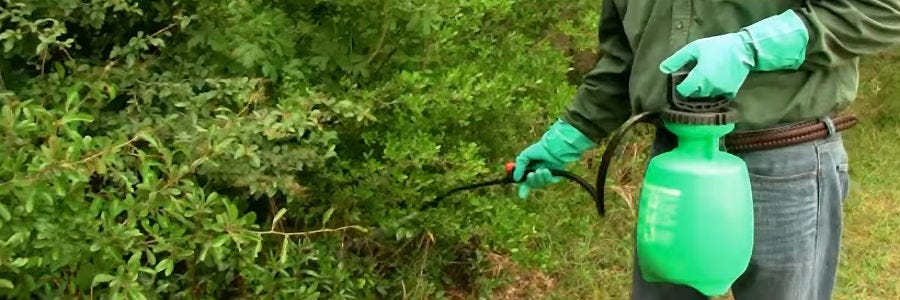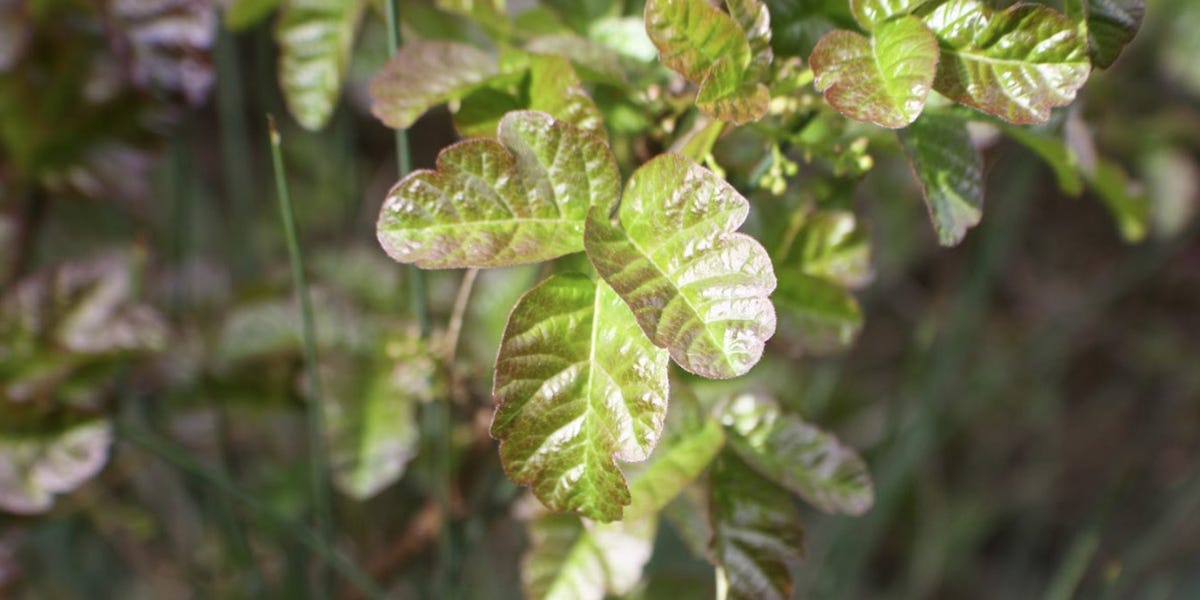Poison Oak Control
Most Effective Products
Poison Oak Control: How To Get Rid of Poison Oak
Poison oak is a widespread deciduous shrub or vine found throughout the country but particularly in the mountains and valleys of California, generally below 5,000 feet elevation. It commonly grows as a climbing vine with aerial roots that grow onto the trunks of oaks and sycamores.
Poison oak, along with poison ivy, are two of the most unpleasantly irritating plants in North America. Each year thousands of people are affected with moderate to severe dermatitis from coming into contact with the leaves and stems of these plants. These same plants can also creep up onto your own lawn which can be a hazard to you and your children if skin happens to come in contact with their leaves which can cause painful and irritating rashes and blisters.
Poison oak forms dense thickets and regenerates readily after disturbances such as fire and the clearing of land. Because the two species of western poison oak often exhibit a vine growth form, they are listed as subspecies of eastern poison ivy by some experts.
If there's poison oak on your property, we can help you to get rid of it. Our lawn care experts have compiled a DIY poison oak treatment guide which provides step-by-step directions on exactly how to eliminate poison oak quickly and affordably using our professional quality herbicides.
Identification
Poison oak looks similar to other harmless plants, so it's important to identify the plant properly before taking actions to remove them. Poison oak grows as a bush or vine, much like poison ivy. In fact, poison oak and poison ivy are so similar to one another that some people use their names almost interchangeably.
The way to tell the difference between poison oak and poison ivy is that poison oak leaves are shaped similar to an oak leaf (though it's not a member of the oak family), they have leaflets which are colored a duller looking green which are more unique lobed or toothed than poison ivy leaves. When mature the older leaflets are a duller green than younger leaves and finally the leaflets are hairy on both sides unlike poison ivy.
Use the description and image above to help you to identify poison oak on your property. If you are having trouble, contact us and our lawn care experts will help you to properly ID the plant as well as offer you product recommendations to remove the weed.
Inspection
Where to Inspect
Walk along your property to observe where the poison oak is growing and how large of a growth this plant has. Poison oak, much like poison ivy, can grow just about anywhere - on trees, on the ground, and on buildings. When inspecting, make sure that you are first properly geared up for the occasion. Be sure to wear long pants, long sleeves, gloves, and boots, covering as much skin as possible.
What To Look For
Check for what phase of growth the plant is in. Poison oak changed color throughout the year, in spring, the leaves have a tinge of red. As spring progresses, leaves change to bright green and loose clusters of small greenish white flowers are produced. As summer progresses, ivory white fruits will form and in the fall the leaves will eventually turn golden, then red and eventually fall off, leaving just the woody stems throughout winter. Unmarked stems are just as effective as the leaves in exposing you to the urishiol oils.
Treatment
Before you proceed with chemical applications, be sure that you are first properly geared up for the occasion. We recommend that you wear long pants, long sleeves, gloves, and boots, covering as much skin as possible because you not only do not want poison oak on your skin, you don't want to accidentally get chemicals on you either.
The best strategy for eliminating poison oak is through the use of chemical herbicides. Use a non-selective herbicide like Glyphosate which will easily kill off this plant. Apply the chemical treatment after the fruit has formed but before the leaves have changed color.
Step 1: Mix and Apply Glyphosate

Prepare a herbicide spray mix of Glyphosate into a pump sprayer. According to the label, the application rate for 2% solution is 4 to 5 quarts of Glyphosate per 3 to 40 gallons of water per acre. Complete control of poison oak will take multiple retreatments every 2 weeks. Fall treatments must be applied before leaves lose green color.
Fill your backpack or pump sprayer halfway with required amount of water, then add in the measured amount of Glyphosate, and fill the rest of the way with the remaining half of water. Close the sprayer tank lid and agitate until evenly mixed.
Sprays must come into contact with the leaves to be effective. However, care must be exercised when using Glyphosate since most shrubs, garden plants and other desired plants which come in contact with the herbicide will be killed. Glyphosate may not completely eliminate poison oak from a single treatment so you may need to do follow-up applications until the poison oak has been totally killed.
Prevention

If you are able to successfully kill off the poison oak, you don't want it to make a comeback. Closely monitor your yard to check if poison oak returns. This should especially be done in the spring and summer since that is when poison oak is actively growing. If patches begin to pop up, spray them with herbicides or yank. Again be careful and use gloves when hand pulling poison oak and wash the gloves afterward.
Key Takeaways
- Along with poison ivy and poison sumac, poison oak is another one of those noxious invasive plants that you may run into while hiking or enjoying the outdoors.
- Our top recommendation to treat poison oak is a post-emergent treatment of Glyphosate.
- Keep poison oak from returning by monitoring your yard closely and killing or pulling out any young poison oak plants that may be growing.











































































































































































































































































































































































































































































































































